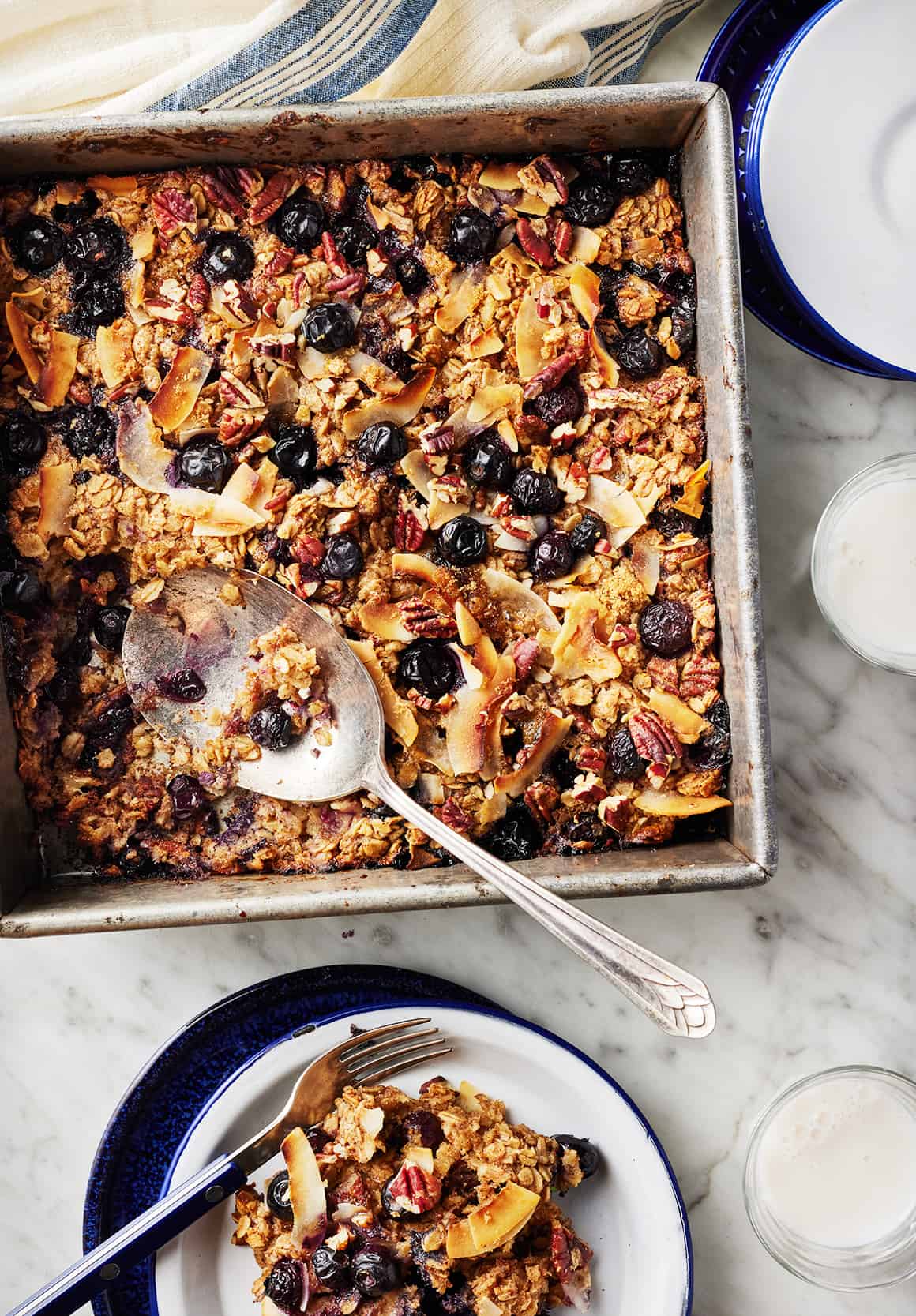
This baked oatmeal recipe is my favorite breakfast of the moment. I love that it can serve a group for a special breakfast or brunch, but it’s also the kind of thing that you can make on a weekend and reheat on busy mornings throughout the week. This blueberry baked oatmeal is made with healthy ingredients—think fresh fruit, almond butter, and whole rolled oats—but it tastes like a treat. The top is toasty and nutty, featuring a layer of pecans and coconut flakes that crisp up beautifully in the oven. The middle, on the other hand, stays soft and creamy, […]